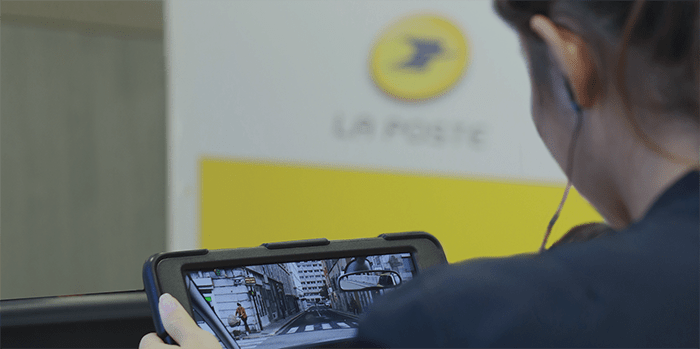Since 2016, La Poste has become a driving theory test national operator. This test, called ETG in French (for Examen Technique Général – General Technical Test), involves providing each candidate with a tablet, in an examination room located in a post office, with a series of questions on it. All post offices involved are equipped with Galaxy Tab 3 tablets.
In a very constraining regulatory framework, one of the main stakes is to ensure a good use throughout time, particularly in terms of battery life for tablets that are being used all day long, knowing that schedule don’t always allow charging in the middle of the day. However, other economical stakes are also connected with management and optimization of resources and energy consumed during a test.
GREENSPECTOR operated in the context of the power consumption optimization of the tablet version of the Cordova application. The team conducted a consumption measurement, a code static analysis and a life cycle assessment of batteries. The audit enabled the detection of a good efficiency level of the application, but also a rather big power consumption coming from the video content.
Feedback on the ETG Project
by Thomas TRUCHE, Central ISD Account Manager.
What were the context and goals of implementing Greenspector in your project?
One of the Project ETG (taking the General Technical Test within La Poste offices) stakes is the optimization of tablets’ life cycle as well as their battery life on a fully booked exam day (up to 10 one-hour sessions).
As a consequence we made the decision to work with Greenspector, and have them work in audit mode, in order to optimize the consumption of our tablet application.
What are the main outputs from this process?
The Greenspector team intervention benefited us on 3 levels:
- The validation that our tablet application is properly eco-designed and the collection of optimization leads to go further in the process;
- The establishment of a tablet charging process intended for employees working in the post offices providing the General Test service;
- The management and anticipation of tablets end of life and renewal.
How did the team react towards eco-design ??
Within La Poste, teams are particularly receptive to sustainable development and its numerous variations.
Thus, the “ETG” development team welcomed the Greenspector intervention with high interests, particularly with the aim of developing new skills in eco-design oriented development.
What are some of the tangible gains identified during this operation?
An economic gain was surely implemented through the battery life optimization of tablets, however it is hard to quantify.
Conclusion
Besides recommendations on the architecture and code aspects of the application, several paths were assessed with the La Poste teams regarding configurations, video formats and future choice of hardware. Measure is key, it allows to validate the impacting key points and work on action plans for a continuous improvement. This shows the interest of this type of process on the whole life cycle while maintaining the link between hardware and software. In the project Business Model, the cost of hardware is the second biggest expenditure. Improving the battery discharge speed leads to a reduction of charging and discharging cycles and an increase in the overall hardware lifespan, and this, in the end, improves the profitability of the test.

